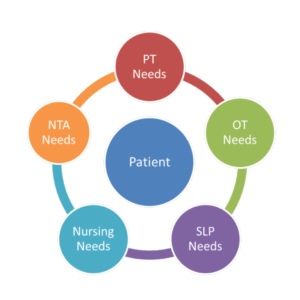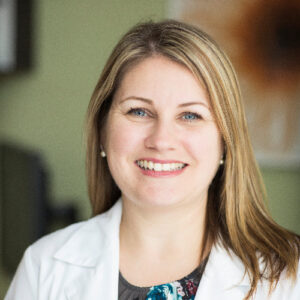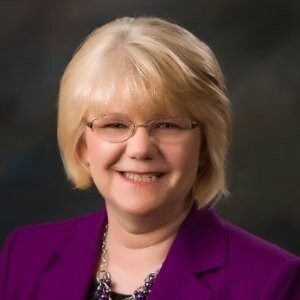MDS 3.0 implementation strategies
Significant changes in assessment philosophy that reflect current clinical practice standards and a focus on resident-directed care are at the core of the next generation Minimum Data Set, the MDS 3.0. Implementation is scheduled for October 2009, but plenty of preparation will be needed leading up to that date. Changes in key operational and clinical systems and processes will help to pave the way to successful implementation—and to improvements in quality of care and quality of life for residents.
How a facility implements the MDS 3.0 will affect all of the critical aspects of nursing home operations: It will determine how accurate the resulting care plans and the data the surveyors see will be, how representative of the quality of care in the facility the Quality Indicators and Quality Measures will be, and whether Part A reimbursement will be consistent with the intensity of care the facility provides.
Effective leadership is the key to success in making this change in the facility, just as it is with any change. An effective and dynamic leader develops a vision for what must be accomplished and shares that vision in a clear and positive manner that leaves no question about the goal—and the worthiness of the goal—that everyone will work toward together. A great leader entices others to follow. As leaders, administrative team members have the central leadership responsibility. Here are some guidelines to lead your team to successful implementation of MDS 3.0:
Make aplan. A critical first step is to make a plan for implementation well in advance of the October 2009 start date. Involve the entire team in the facility, and, as a leader, be the facilitator throughout the process—leave no doubt that this project has the full support of the facility’s administrative team.
Provideformal training. Ensure that all staff members who will participate in the assessment receive formal training from recognized experts. As the leader, be sure to remove obstacles that might prevent them from receiving the training and support they will need. Also, ensure they have the most up-to-date instruction manual at all times. Affiliation with the American Association of Nurse Assessment Coordinators (AANAC) and the American Association of Nurse Executives (AANEX) can be instrumental in meeting these needs.
Create a team of individualsection specialists. Solicit volunteers among the staff to become the experts on the various new items, one person/one item (or section). Each of these specialists would provide additional mentoring and support to other team members with regard to the item specialty and would act as a resource person on that item on a continuing basis.
Find out aboutyour software vendor’s transition plan. The Centers for Medicare & Medicaid Services (CMS) has published a timeline for providing to the software vendors the information they will need to develop the MDS 3.0 software in time for implementation. But beyond that, each vendor will develop its own process and timeline for software development and testing. It is critical that your facility be aware of your vendor’s plan well in advance and that a joint plan for integration of the new software into your facility, including plenty of time for staff training, be developed.
Recognize that theMDS is a complex process. The nursing home industry can learn a lot about what not to do from implementation of the original MDS in the early 1990s. In many ways, the complexities of the process were not recognized and accounted for at that time, and to this day, the ripple effect of consequences continues in inaccurate assessment data that may be attributed to inadequate training, lack of priority from administrative team members, and a job description for MDS nurses that in many ways cannot be accomplished.
Understand the MDS 3.0 yourself. Make sure you have a clear understanding of the processes of the MDS 3.0—how it works and how it can be used to improve quality of care, quality of life, and outcomes for your residents—how it can be the foundational tool for culture change for your facility. Understanding the MDS 3.0 yourself is important also so you can assist the interdisciplinary team by removing obstacles to success, providing needed resources, and monitoring to identify training needs and to recognize successes. Administrative team members in many organizations have never really understood their key role in the MDS 2.0 in this context and to this day may have significant problems with MDS accuracy and effectiveness as a care planning tool, whether they know it or not, despite the critical role this instrument plays in the survey process, reimbursement, and quality monitoring. Unless you will be completing some portion of the MDS 3.0, that doesn’t mean that you have to know how to fill out every item on the MDS. But it does mean that you must know enough about it to ensure that the team responsible for completion of the form gets it right.
Empower a team toanalyze and revise processes. The team should study current MDS-related processes in the facility; flowcharting the processes can be very helpful in analyzing what works and what doesn’t work. Brainstorm with them what will be needed in terms of processes for the team to be able to do its work efficiently and effectively. This team should then flowchart the proposed new process step by step in order to identify and remove barriers to success—and to be able to know when aspects of the proposed processes should be altered.
Put together a team to analyze the facility’sstaffing patterns and job designs. Too often, job descriptions evolve into task lists that have little relationship to their purpose. This may be a good time to restructure or redesign jobs to meet the needs of the facility and residents.
Experiment with the interviews yourself. Go out there and sit down with a resident and complete the scripted interviews that are an integral part of the MDS 3.0. Get comfortable with the process. Don’t forget to take your cues from the instruction manual that will accompany the MDS 3.0. It will provide you and your team with the script to use, but also with some tips on how to help residents stay focused and to narrow their answers. Also, it would be wise to time the interviews you do, so you can begin to have an idea of how long they are going to take. This will really help when your staff needs support and guidance about these interviews. And this doesn’t have to wait until the MDS 3.0 is implemented. These scripted interviews can be very valuable right now—not for use with the MDS 2.0—but as an assessment tool for care planning purposes outside of the MDS process.
Incorporatestaff practice timeinto the facility transition plan. With phasing in of the scripted interviews long before MDS 3.0 implementation and providing ample time for staff to practice completing the new form, October 1, 2009, will not have to be a frantic time.
Develop aquality improvementplan for MDS 3.0 activities. Include practice in auditing the accuracy of the MDS 3.0 and related documentation, and implement routine monitoring of accuracy as part of the facility’s Quality Assessment and Assurance activities.
Be prepared for resistance—but be undaunted by it. Resistance to change is inevitable. Prepare for it. Learn from it. Harness the energy and use it toward change.
Be a cheerleader for this change. Even at best, change is very difficult. Be a leader in this transition. Be an example for others to follow. You can do this by presenting this MDS upgrade as a very positive change for residents. The interview process gets to the core of what the resident wants and what is important to him or her. It is the basis for resident-directed care and for culture change. And you can also do this by presenting this change as a positive one for the facility. The improvements in quality of care and quality of life that can result from fully implementing the MDS 3.0 approach will shine through at survey time and in staff and resident satisfaction. Making change happen takes time and vision, patience, and leadership. What seems clear is that providers with effective and dynamic leadership in an atmosphere of resident-directed care will be the ones to experience a smooth, successful transition.
The investment of passion for the residents, commitment to interdisciplinary team members, and clear articulation of vision and expectations from a dedicated leader will help to pave the way for full and successful implementation of the MDS 3.0.
Rena R. Shephard, MHA, RN, RAC-MT, C-NE, is Executive Editor of the American Association of Nurse Executives. She can be reached at (858) 592-6799, or for more information, visit
To send your comments to the author and editors, please e-mail shephard0908@iadvanceseniorcare.com.
Sidebar
About AANEX
The American Association of Nurse Executives (AANEX) is a nonprofit professional association representing nurse executives working in the long-term care industry. AANEX is operated by nurses for nurses and is dedicated to providing members with the resources, tools, and support they need in their specialized role of leader and manager in long-term care.
AANEX offers the nurse executive:
The opportunity to discuss common challenges and problem-solve with peers and experts from across the country via the Executive Town Hall and online discussion groups
Quick and easy access to current long-term care news, regulatory updates, manuals, and publications
Weekly e-mail reminders about important dates, deadlines, and current events
Educational programs and CEs encompassing the essential job functions of the long-term care nurse executive
ExecExpress, a weekly newsletter addressing tough issues and frequently asked questions posed by AANEX members
AANEX is the organization chosen by successful leaders in long-term care. To join or to get more information about AANEX, visit https://www.aanex.org or call (877) 457-7208.
Long-Term Living 2008 September;57(9):64-65
I Advance Senior Care is the industry-leading source for practical, in-depth, business-building, and resident care information for owners, executives, administrators, and directors of nursing at assisted living communities, skilled nursing facilities, post-acute facilities, and continuing care retirement communities. The I Advance Senior Care editorial team and industry experts provide market analysis, strategic direction, policy commentary, clinical best-practices, business management, and technology breakthroughs.
I Advance Senior Care is part of the Institute for the Advancement of Senior Care and published by Plain-English Health Care.
Related Articles
Topics: Articles , Medicare/Medicaid











